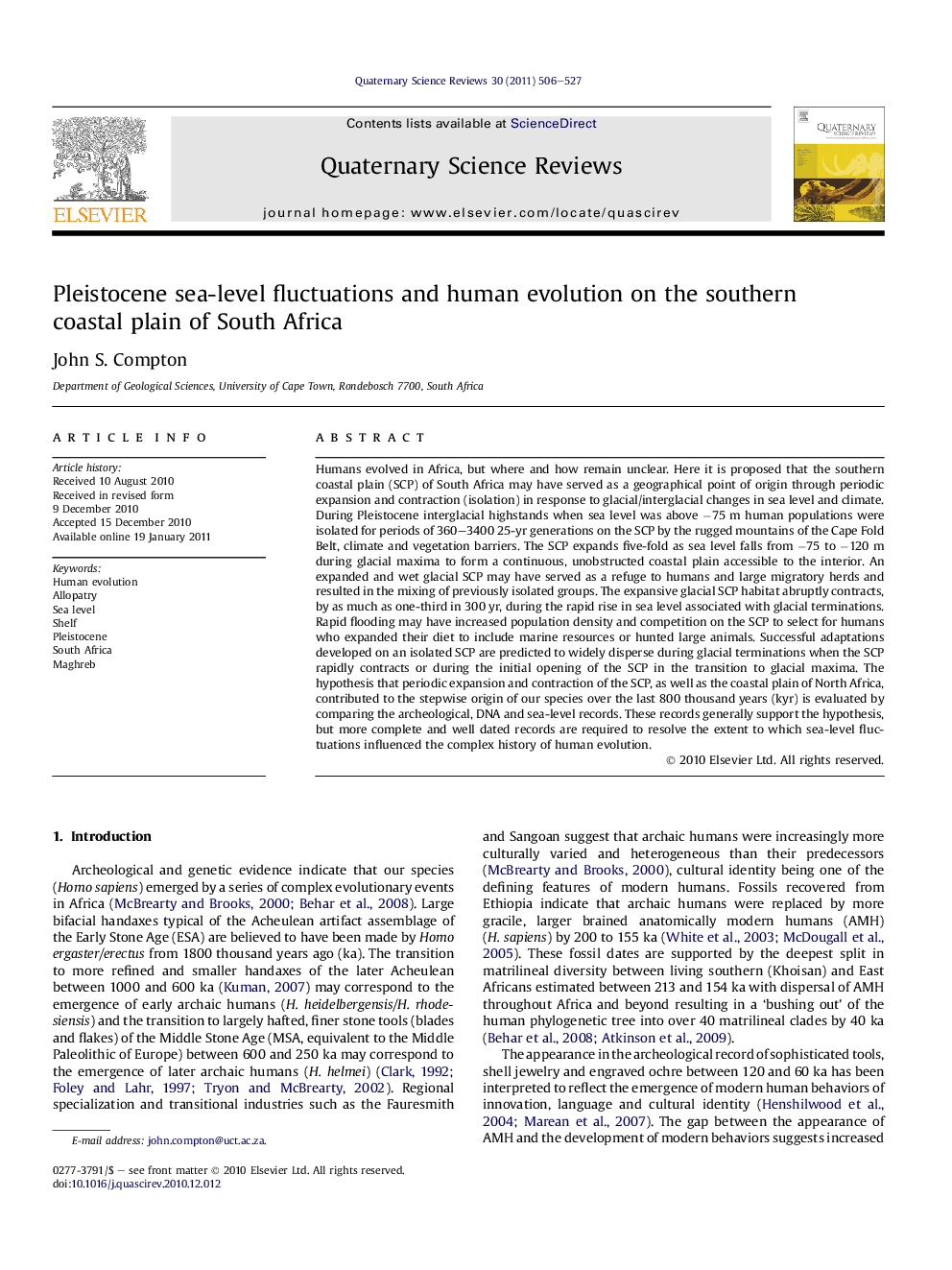| کد مقاله | کد نشریه | سال انتشار | مقاله انگلیسی | نسخه تمام متن |
|---|---|---|---|---|
| 4736968 | 1640915 | 2011 | 22 صفحه PDF | دانلود رایگان |

Humans evolved in Africa, but where and how remain unclear. Here it is proposed that the southern coastal plain (SCP) of South Africa may have served as a geographical point of origin through periodic expansion and contraction (isolation) in response to glacial/interglacial changes in sea level and climate. During Pleistocene interglacial highstands when sea level was above −75 m human populations were isolated for periods of 360–3400 25-yr generations on the SCP by the rugged mountains of the Cape Fold Belt, climate and vegetation barriers. The SCP expands five-fold as sea level falls from −75 to −120 m during glacial maxima to form a continuous, unobstructed coastal plain accessible to the interior. An expanded and wet glacial SCP may have served as a refuge to humans and large migratory herds and resulted in the mixing of previously isolated groups. The expansive glacial SCP habitat abruptly contracts, by as much as one-third in 300 yr, during the rapid rise in sea level associated with glacial terminations. Rapid flooding may have increased population density and competition on the SCP to select for humans who expanded their diet to include marine resources or hunted large animals. Successful adaptations developed on an isolated SCP are predicted to widely disperse during glacial terminations when the SCP rapidly contracts or during the initial opening of the SCP in the transition to glacial maxima. The hypothesis that periodic expansion and contraction of the SCP, as well as the coastal plain of North Africa, contributed to the stepwise origin of our species over the last 800 thousand years (kyr) is evaluated by comparing the archeological, DNA and sea-level records. These records generally support the hypothesis, but more complete and well dated records are required to resolve the extent to which sea-level fluctuations influenced the complex history of human evolution.
Journal: Quaternary Science Reviews - Volume 30, Issues 5–6, March 2011, Pages 506–527